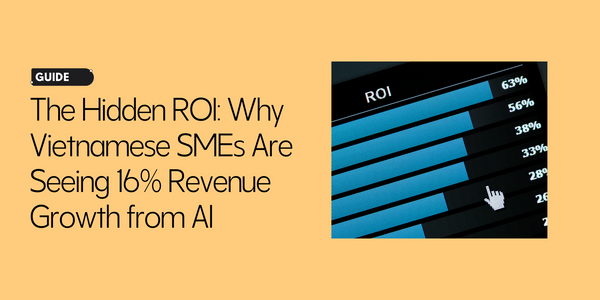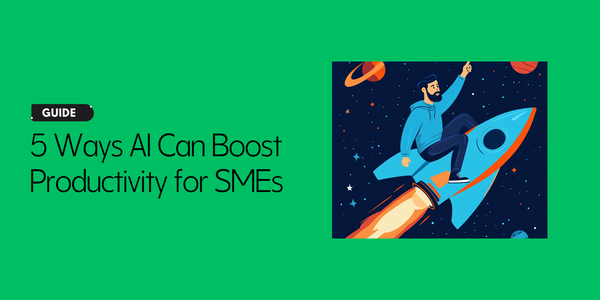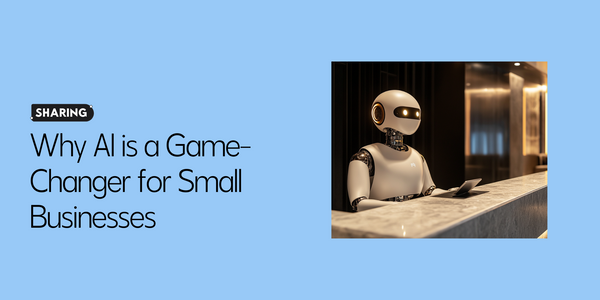AI tools have evolved rapidly, offering new capabilities that can help individuals and businesses stay ahead in an increasingly dynamic world. Whether you're aiming to boost productivity, uncover insights, or enhance customer engagement, leveraging the latest AI innovations is essential for success in 2025.
This detailed guide explores five key ways to use AI tools effectively, based on the most recent developments from the last three months. Packed with examples, actionable tips, and insights, it's designed to help you navigate the AI landscape and harness its potential to thrive.

The evolution of AI tools has accelerated dramatically in recent months, creating new possibilities for businesses
1. Automate Routine Tasks with AI Agents
Automation remains one of AI's most powerful applications, saving time and resources by taking over repetitive tasks. In 2025, AI agents—autonomous systems capable of executing complex workflows—are becoming more accessible and efficient, thanks to recent advancements.
Latest Developments
- OpenAI's AI Agent Tools: In January 2025, OpenAI rolled out new tools allowing businesses to create custom AI agents. These agents can manage tasks like scheduling, customer support, and even multi-step processes, such as drafting emails based on calendar events. This launch has democratized automation, making it easier for companies to integrate AI without heavy coding expertise.
- Compact AI Models: Over the past three months, there's been a surge in lightweight AI systems that deliver high performance with lower computational demands. For instance, advancements reported in tech news (circa February 2025) highlight models like DeepSeek's latest iteration, which offers robust automation capabilities for smaller businesses at a fraction of the cost.
Practical Example
Imagine a freelance graphic designer juggling multiple clients. Using OpenAI's agent tools, they could deploy an AI agent to handle invoicing: it tracks project deadlines, generates invoices, and sends them to clients—all without manual input. Meanwhile, a compact AI model could automate file organization, sorting design assets by project type or date.
How to Get Started
- Tool to Try: OpenAI's agent-building platform (accessible via their developer portal as of January 2025) or lightweight alternatives like Hugging Face's free models.
- Action Step: Identify one repetitive task—like data entry or email follow-ups—and set up an AI agent to handle it. Start small, test the results, and scale as needed.
Why It Matters: Automation frees up your most valuable resource—time—allowing you to focus on strategy, creativity, or client relationships. In 2025, businesses that master this will outpace competitors stuck in manual workflows.
2. Unlock Data Insights with AI Analytics
AI's ability to analyze massive datasets and deliver actionable insights is reshaping decision-making across industries. The last three months have seen significant upgrades in AI analytics platforms, making them more powerful and user-friendly.
Latest Developments
- Microsoft Azure AI Updates: In December 2024, Microsoft announced enhancements to Azure AI, including real-time analytics features that process data streams instantly. This is a game-changer for industries like retail and logistics, where timing is critical.
- Healthcare Breakthroughs: A February 2025 report highlighted AI systems analyzing patient data to predict disease progression with unprecedented accuracy. For example, Google's DeepMind expanded its healthcare tools to suggest treatment plans based on real-time medical records.

Kachrsoft Agents, using multiple models for many different jobs, save tons of time for business owners.
Practical Example
A mid-sized e-commerce company could use Azure AI to analyze customer purchase patterns from the past quarter. The platform might reveal that demand for eco-friendly products spikes in January, prompting the company to adjust inventory and marketing ahead of time. In healthcare, a clinic could use DeepMind's tools to prioritize patients at risk of complications, improving outcomes and efficiency.
How to Get Started
- Tools to Try: Microsoft Azure AI (offers a free tier for small-scale testing) or Google Cloud AI's analytics suite.
- Action Step: Import a dataset—sales figures, website traffic, or customer feedback—into one of these platforms. Use their dashboards to spot trends and make one data-driven decision this week.
Why It Matters: In a world drowning in data, AI analytics turns noise into clarity. Businesses and professionals who leverage these insights will make smarter, faster decisions in 2025.
3. Enhance Customer Experience with AI-Powered Interactions
Customers in 2025 expect seamless, personalized experiences, and AI is delivering. Recent innovations in chatbots and virtual assistants are making interactions more natural and effective.
Latest Developments
- Sophisticated Chatbots: In January 2025, companies like Anthropic released Claude 3.5, a conversational AI that rivals human-like understanding. It's being used in customer service to handle nuanced queries—like troubleshooting tech issues—without escalation.
- Automotive AI Agents: A March 2025 tech conference showcased AI-driven "agentic experiences" in cars. For instance, Tesla's latest software update includes a voice assistant that answers driver questions (e.g., "Where's the nearest EV charger?") while adapting to traffic conditions.
Practical Example
A small online retailer could deploy Claude 3.5 as a chatbot to answer customer questions about shipping or returns, reducing response times from hours to seconds. Meanwhile, a car dealership might use an AI assistant to offer personalized financing options based on a buyer's preferences, boosting satisfaction and sales.
How to Get Started
- Tools to Try: Anthropic's Claude (via API integration) or Tidio (a plug-and-play chatbot with a free plan).
- Action Step: Set up a chatbot to handle your top three customer inquiries. For personalization, use an AI tool like HubSpot to tailor email campaigns based on past interactions.
Why It Matters: Exceptional customer experiences build loyalty and trust—AI makes it scalable and affordable, giving you an edge in competitive markets.
4. Forecast Trends with Predictive Analytics
Predictive analytics uses AI to anticipate future outcomes, helping you plan proactively. The past three months have brought tools that make this technology more precise and accessible.
Latest Developments
- Healthcare Predictions: In January 2025, IBM Watson Health introduced a predictive model that forecasts patient readmission risks with 90% accuracy, based on electronic health records. This is saving hospitals millions by optimizing care.
- Financial AI: A February 2025 update to SAS's fraud detection platform uses AI to predict suspicious transactions in real-time, cutting losses for banks and fintech firms.
Practical Example
A logistics company could use predictive analytics to forecast delivery delays due to weather patterns, rerouting shipments before disruptions occur. In finance, a small business owner might use SAS to spot unusual spending patterns, preventing fraud before it escalates.

AI-powered predictive analytics helps businesses anticipate market changes before they happen
How to Get Started
- Tools to Try: IBM Watson (offers a trial for predictive modeling) or Google Analytics with AI add-ons.
- Action Step: Input historical data—like sales or operational metrics—into a predictive tool. Use its forecast to adjust one business decision, such as inventory or staffing.
Why It Matters: Anticipating challenges and opportunities keeps you ahead of the curve, turning uncertainty into a strategic advantage.
5. Foster Innovation and Creativity with AI
AI is no longer just a productivity booster—it's a creative partner. Recent tools are empowering innovation in education, design, and research.
Latest Developments
- Education Personalization: In December 2024, Google launched LearnLM, an AI that adapts lesson plans to individual student needs. It's being piloted in schools to improve engagement and outcomes.
- Scientific Acceleration: A March 2025 breakthrough from DeepMind's AlphaFold team refined protein structure predictions, speeding up drug discovery for diseases like Alzheimer's.
Practical Example
A content creator could use LearnLM to design a tailored course for their audience, while a biotech startup might leverage AlphaFold to simulate drug interactions, cutting research time from years to months. On the creative side, tools like Midjourney's latest release (January 2025) can generate stunning visuals for marketing campaigns in seconds.
How to Get Started
- Tools to Try: Google LearnLM (via educational partnerships) or Midjourney (subscription-based).
- Action Step: Use an AI creative tool to prototype one project—whether it's a blog post, design, or research hypothesis—and refine it based on AI suggestions.
Why It Matters: Innovation drives growth, and AI amplifies your ability to experiment, create, and solve problems faster than ever.
Overcoming Common AI Challenges
Adopting AI can feel daunting, but recent tools address these barriers:
Cost
Free tiers from Google Analytics, Tidio, and Hugging Face make entry affordable. Paid options like Azure AI scale with your budget.
Complexity
Plug-and-play platforms like Canva (with AI design) or Chatfuel require no technical skills.
Security
Stick to trusted providers—Microsoft, IBM, and Google all updated their privacy policies in early 2025 to comply with global standards.
Pro Tip: Pilot one tool for a month, measure its ROI, and expand from there.
Thrive in 2025 with AI
AI is reshaping the future of work and competition. By automating tasks, analyzing data, enhancing customer experiences, predicting trends, and sparking creativity, the latest AI tools offer a roadmap to success. The past three months alone have delivered innovations that make these capabilities more powerful and accessible than ever.
Take Action
Choose one area to start with—automation, analytics, or creativity—and test a tool today. The AI landscape will keep evolving, but those who adapt now will lead the way in 2025 and beyond.







